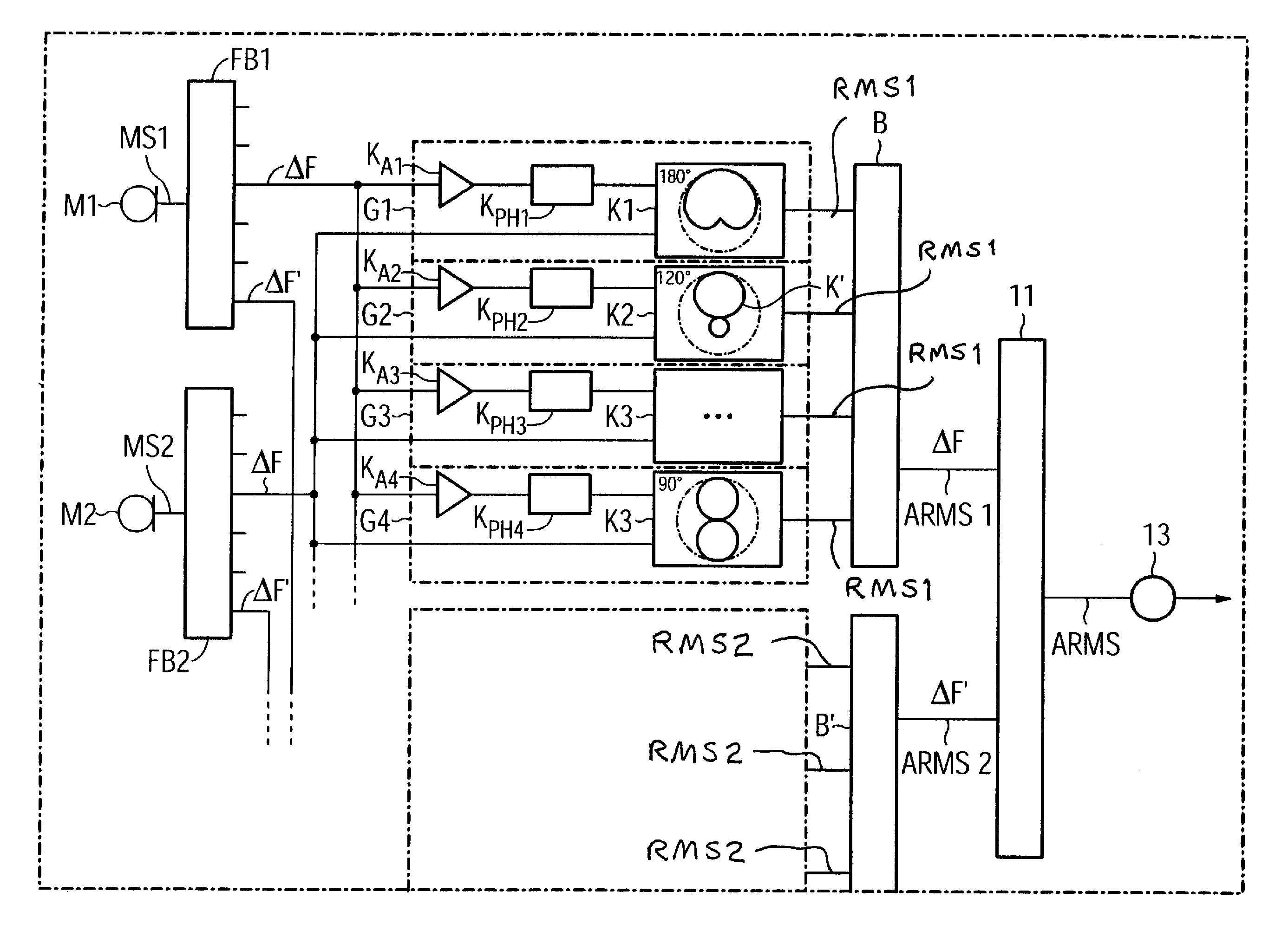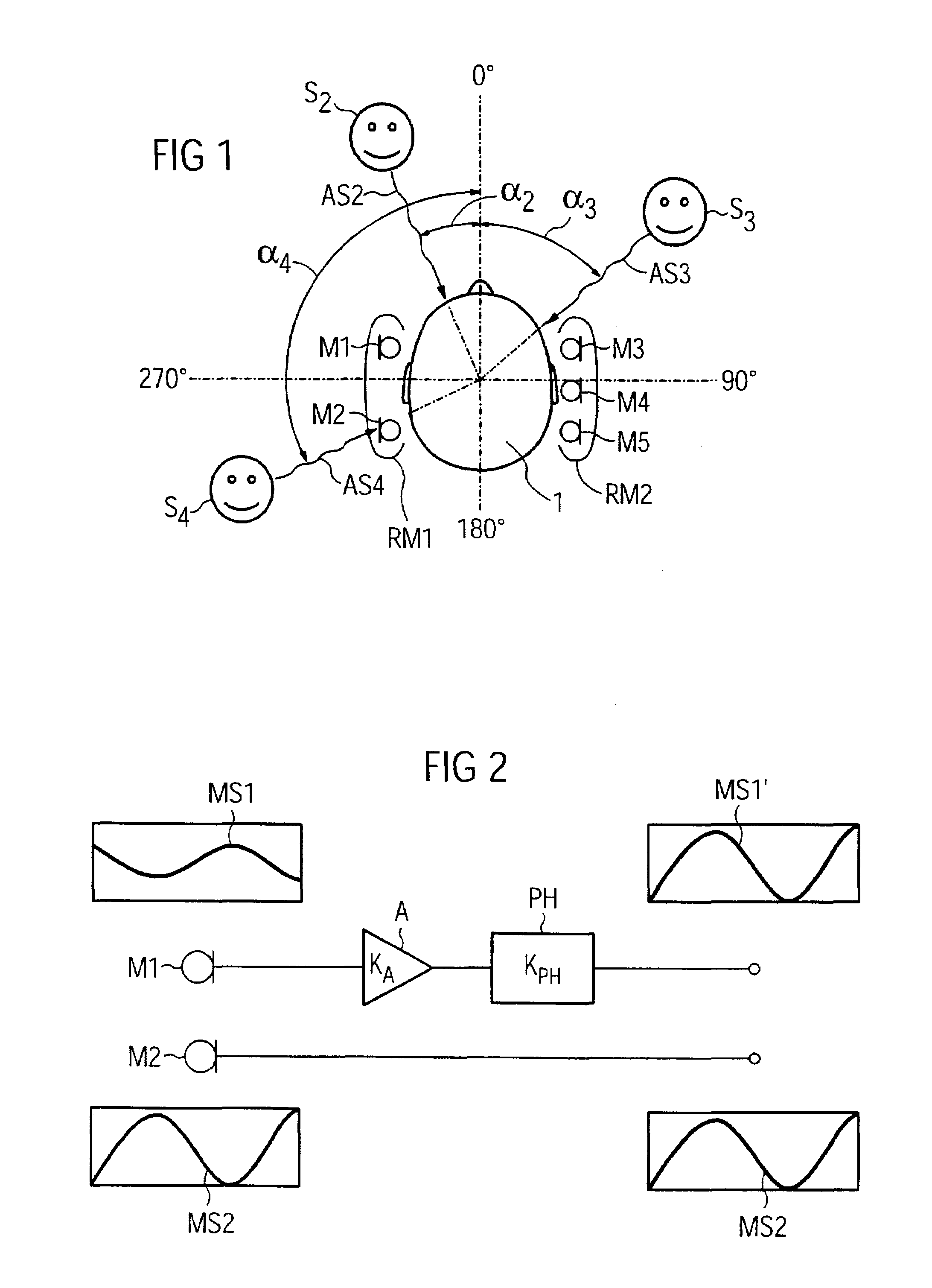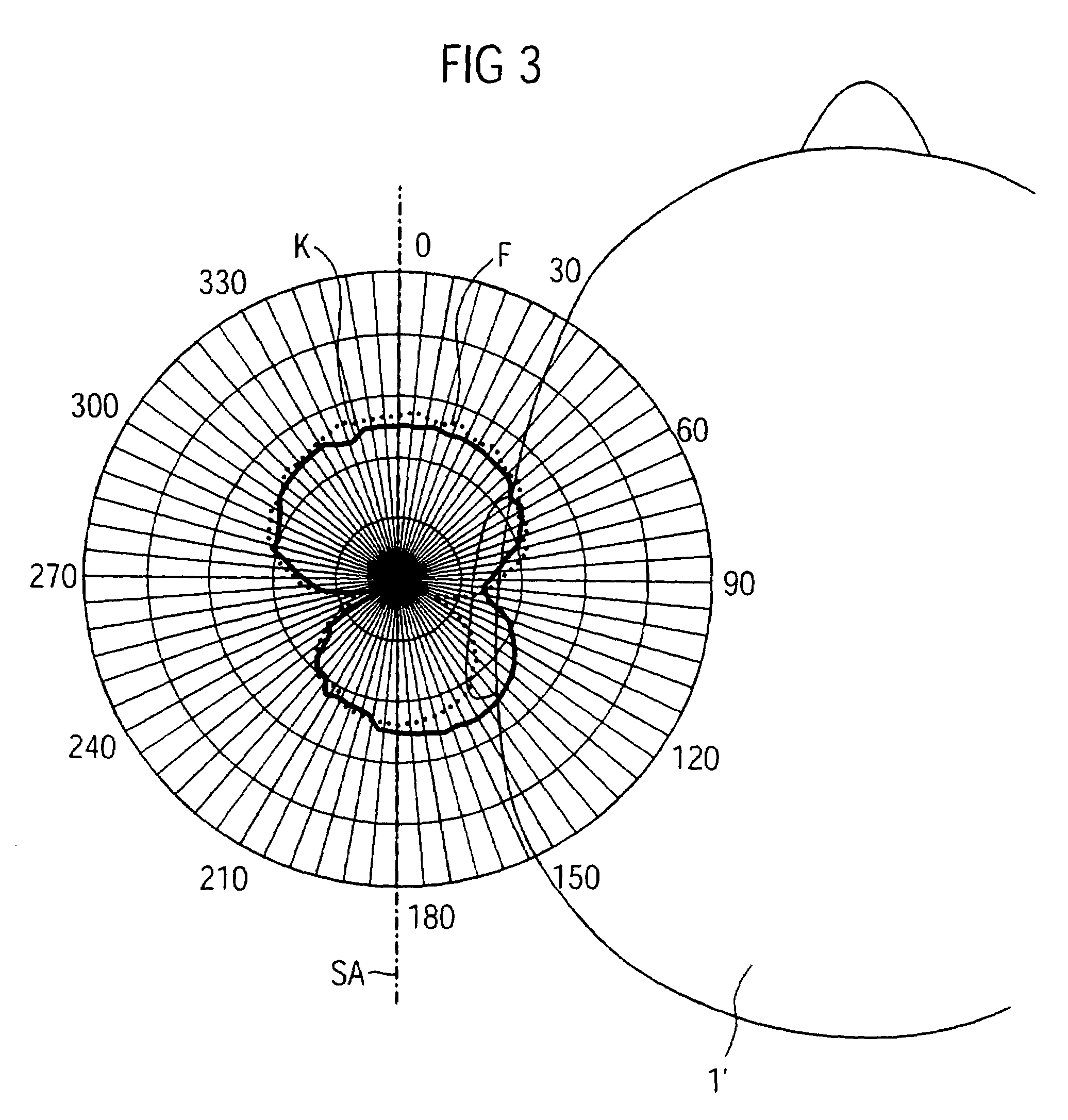Method and apparatus for identifying the direction of incidence of an incoming audio signal
a technology of audio signal and incidence direction, applied in the direction of direction finder using ultrasonic/sonic/infrasonic waves, microphone signal combination, spatial/construction arrangement of microphones, etc., can solve the problem of inability to determine direction unambiguously, method is rather unsuitable for small microphone separation, method is inaccurate for typical microphone separation
- Summary
- Abstract
- Description
- Claims
- Application Information
AI Technical Summary
Benefits of technology
Problems solved by technology
Method used
Image
Examples
Embodiment Construction
[0040]FIG. 1 shows a typical example of the use of a directional microphone system RM1, RM2 for the determination of a direction of incidence of an acoustic signal. In this case, one or more directional microphone systems RM1, RM2 are located in a hearing aid which is worn as such by the person 1. The person 1 is having a conversation with the people S2, S3, S4 who are located in different directions with respect to the person 1. As an example, the difference between the position of the person S2 and the 0° axis is the angle α2 within a conical directivity area of the directional microphone system RM1.
[0041]The people S3, S4 are located at angles of α3, and α4, respectively, with respect to the 0° axis. In order to produce an ASA, the signal sources of the acoustic signals AS2, AS3, AS4 should be localized, that is to say the direction of incidences of the signals AS2, AS3, AS4 should be determined by one of the directional microphone systems, RM1, RM2.
[0042]The directional micropho...
PUM
 Login to View More
Login to View More Abstract
Description
Claims
Application Information
 Login to View More
Login to View More - R&D
- Intellectual Property
- Life Sciences
- Materials
- Tech Scout
- Unparalleled Data Quality
- Higher Quality Content
- 60% Fewer Hallucinations
Browse by: Latest US Patents, China's latest patents, Technical Efficacy Thesaurus, Application Domain, Technology Topic, Popular Technical Reports.
© 2025 PatSnap. All rights reserved.Legal|Privacy policy|Modern Slavery Act Transparency Statement|Sitemap|About US| Contact US: help@patsnap.com



